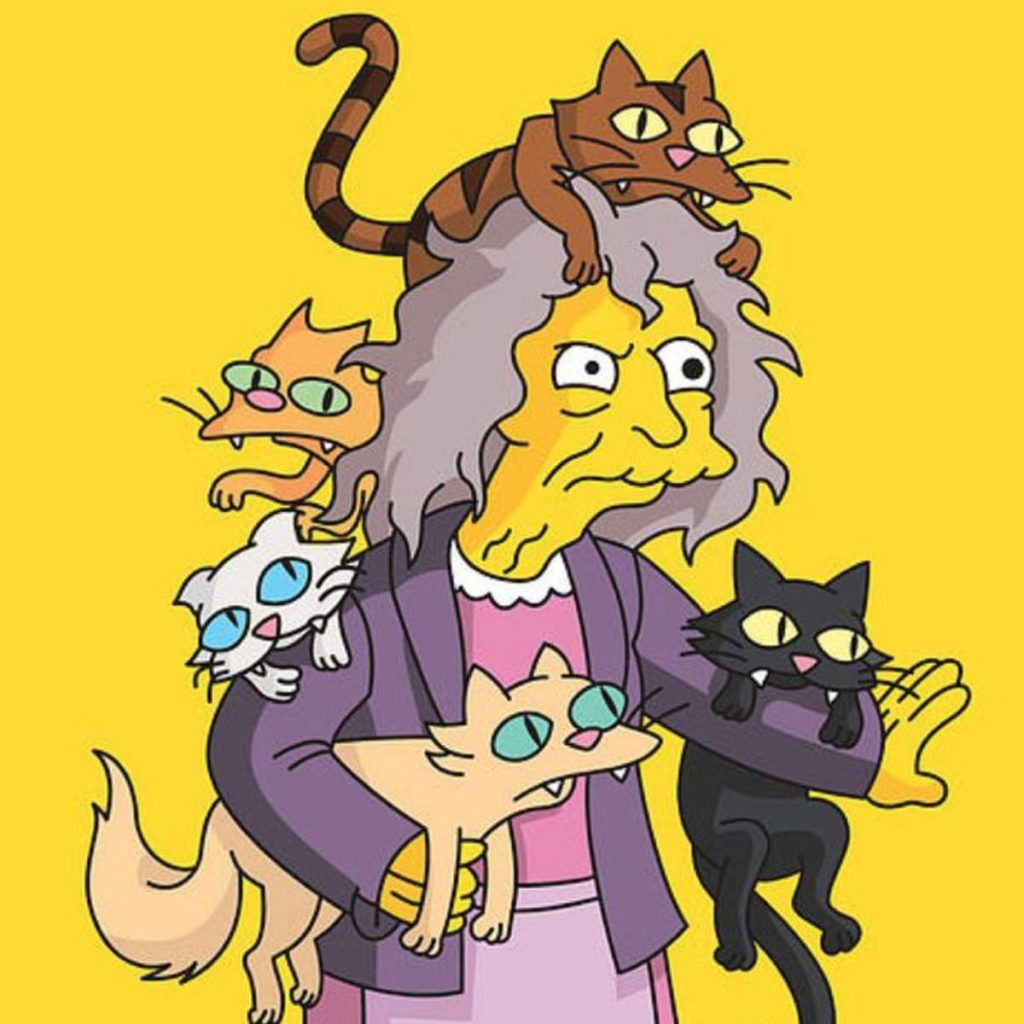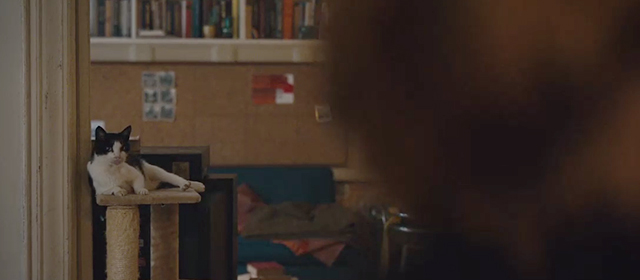Hellers’ biopic Can You Ever Forgive Me (1) is about struggling writer Lee Israel who, to finance her cat’s vet bills, becomes a master forger of literary letters. Impersonating figures such as Noël Coward and Dorothy Parker, Lee earns herself a pretty penny and, eventually, a criminal record.
Protagonist Lee, played by Melissa McCarthy, is a vinegary woman who holds a deep contempt for any interaction with human beings. She is consistently rude, anti-social, emotionally unavailable and more than often, drunk. Lee’s difficulties with human interaction ultimately lead her and her peer’s to the conclusion that Lee is simply incapable of love. A claim that’s not a far stretch considering Lee’s multitude of failed relationships depicted in the film. Her cynical and fraught friendship with Jack Hock, the bitterness of ex-girlfriend Elaine, her estrangement from any family and finally, her awkward and unfulfilled romance with shy bookshop owner, Anne. However, despite the film’s overarching plot of Lee’s consistent destruction of the possibility of love, Heller’s portrayal of Lee is highly sympathetic. A sympathy I argue evolves from the fact, Lee is capable of love in the form of her persisting and unconditional love for pet cat, Jersey. As Lee states in a startlingly confessional court speech, “she (Jersey) was probably the only soul that ever truly loved me”.

Lee and Jersey
On the surface, regarding societal perceptions of people who chose cats over humans, Lee’s subjectivity as “a 51-year-old woman who loves cats more than people” could be perceived as non-normative and somewhat, a deep failure of personality. As Haraway argues in her Companion Species Manifesto (2), “people (like Lee) burdened with misrecognition, contradiction, and complexity in their relations with other humans, find solace in ‘unconditional love” (p.33) from their pets. However, as Haraway (3) states in an interview about the manifesto, in fact “all love objects are inappropriate” (p.144) animals, humans and even, inanimate objects are all projections of some sort of innate lack. I argue, this arbitrariness and ambiguous concept of love permeates the film’s narrative. It’s main plot after all explores how Lee – an apparently failed identity – is able to falsely impersonate personal, authentic love letters. A mocking of human concepts of love. Therefore, it transpires that it’s not that Lee cannot love but rather, she chooses to dismiss loving those objects she is expected to. Lee’s kinship with Jersey therefore, is an act of resistance rather than an embodiment of failure.
Within society, derogatory terms like ‘crazy cat lady’ insinuate women who don’t fulfil the expected feminine roles of heteronormativity, domesticity and politeness turn to animal relations in order to find solace. At first, Heller presents Lee’s ruthless disregard of gendered roles in this light, using the domestic space of Lee’s flat as an indicator. For example, in the film’s introduction to Lee’s flat, (00.20-03.12) we see that Lee’s bedroom is infested with flies. Pests, unlike pets, are a life form systematically excluded from the home. Therefore, for them to be present within Lee’s bedroom illustrates her absolute disregard for domestic cleanliness and housekeeping – particularly feminine role.
At first, the abject and unconventional space of Lee’s bedroom is depicted with bleak emptiness at its core – insinuating Lee’s life as a sort of failure. Lee lies prostrate on her bed, staring blankly at the ceiling. Meanwhile, the non- diegetic sound of Jeri Southern’s quintessential love song I Thought of You Last Night plays. Southerns’ lyrics about romantic desire and longing however are disrupted by diegetic sirens and shouting coming through the window. A distorting of romantic discourse that shows how Lee’s bedroom, typically a domain of heterocoupledom, is absent from romantic, human relations. Without a love object to accompany the love song, it appears ambiguous and disjointed, formulating a bleak emptiness to the scene. The singular book on the bed side table evokes a haunting sense of loneliness that’s difficult to shake off.
However, the tone changes when Lee moves into the kitchen – the space where Jersey lies. Now, the outside noise dissipates, allowing Southern’s lyrics to gradually intertwine with the film’s action. “Darling my darling I can’t live without you/ I’m lonely so lonely when you’re out of sight” Southern sings as Lee gazes at Jersey with a demeanour of sweetness and affection not yet evoked by McCarthy. Here, Heller’s manipulation of sound shows that Lee’s life is not bleak and lonely, she has Jersey. Linking with Haraway’s discussion people burdened with a difficulty assimilating into human relationships, it’s clear that Lee does find solace through her kinship with Jersey. The human-space of the bedroom, notably an area pets are usually banned from, is absent and lonely. Meanwhile the shared area with Jersey is a space where Lee appears no longer lonely but engaged with another living being.
However, by no means does Heller present this negatively. Prior to her interaction with Jersey, Lee is only depicted miscommunicating and disregarding human interaction. The film begins with a drunken Lee being fired from her job for her use of profanity. However, with Jersey, Lee enacts an astute awareness and desire to understand Jersey’ wants and needs. For example, in attempting to beckon Jersey over, Lee read’s Jersey’s body language and realises Jersey is uninterested in food asking “When did you become so picky?”. At first, this seems insignificant however, as the film progresses we see Jersey’s disinterest in food is a sign she is sick. Responding to Jersey’s bodily language therefore, Lee exhibit’s a communication and understanding of others that recognises their needs. Need’s Lee ends up breaking to law to fulfil by forging her first letter to pay Jersey’s bills. Therefore, when ex-girlfriend Elaine claims their relationship fell apart because Lee cut her off and refused to communicate with her; it becomes apparent this isn’t whole of Lee’s personality. Outside the realm of human language, that solution to the gap of non-comprehension between two beings, Lee is able to empathise and engage with other living beings.
Therefore, this raises the question as to why Lee still refuses human interactions throughout the film. Looking towards the private/public binary explores a possibility. What is notable about this brief moment of interaction with Jersey is its cinematic atmosphere in comparison to the scene surrounding it. Prior to the kitchen scene and also after, the film’s colour scheme is grey and bleak. For example, in the next scene Lee walks to a party through New York at night. Isolated and ignored by the masses of bodies that walk the street, the film’s colour scheme is dark and grey- lacking any intimacy and warmth. Meanwhile, in the kitchen the orange and yellow colour palette, paired with the Southern’s honeyed tones, depict a warm relief to the grey and bleak colours of the public space. A contrast in colour scheme that depicts Lee’s alienation within the public sphere.
This separation between private/public space that cannot help but conjure ideas of heteronormativity. Homosexuality, although legal, was still limited within the public sphere, hence the fact Lee hides away from the cityin renowned gay bar, Julius’ where she meet’s Jack Hock. However, whilst Jack exhibits pride and confidence regarding his sexual orientation – picking up waiters in restaurants, Lee is quieter and subtler. A withdrawal that perpetuates the awkward and ultimately failed, date with Anne. During their dinner, Anne is clearly interested in Lee as she offers to look after Jersey if Lee died. A hint at shared domesticity that interlinks Lee’s kinship with Jersey with her sexuality. However, despite Lee’s efforts, communication breaks down and the date ends on an ambiguous note and is never salvaged. Lee’s inability to communicate here does not root from a complexity with understanding other humans – Lee’s reaction to Anne’s offer making this quite clear. However, it comes from the exterior restriction of heteronormativity of the public space. After all, in spite of all his confidence, Jack never fully communicates with the waiter until he is within the four-walls of Lee’s flat.

Lee and Jack at the famous Julius’
Meanwhile, Lee can only exhibit human love through the mask of author persona’s in her forged letters. Understanding the language of intimacy through her false words shows Lee, despite her restrictions in her own life, is capable of understanding and conveying human emotion, becoming a “better Dorothy Parker than Dorothy Parker”. Here, Lee’s ability to fake intimate language devalues and deconstructs its validity. Whilst her bodily communication with Jersey is informative and correct, particularly as Jersey only dies when Lee leaves the flat overnight, language appears arbitrary and easily forged. Therefore, the inappropriate love object of Jersey formed without language seems no less inappropriate than a human love forged through words.
Ultimately therefore, the negative and derogatory perceptions of Lee as unable to love are proved false through her kinship with Jersey. A kinship that not only reveals Lee’s ability to love but moreover, shows what prevents her from loving humans. As language is restricted and censored within the heteronormative sphere, Lee’s connection with humans suffers and leads her to retreat behind the mask of false personas. A mask that ultimately proves human relationships themselves are arbitrary. However, through a relationship based upon body language and an alternative form of kinship, absent of human notions of gender and sexuality, Lee is able to exhibit her humanity and empathy and her interaction with humans denies her. As the film finishes on Lee stroking the belly of a brand new kitten, it’s clear that Heller wants to re-imagine how we perceive human/animal kinship’s as not inappropriate but as meaningful and as fulfilling as human relations.

Real Life Lee Israel
Links
(1) Can You Ever Forgive Me. (2018) [Online Database] Directed by Marielle Heller. Fox Searchlight Pictures. [Viewed 13th April 2020]. Available from: Sky Movies
(2) Haraway, Donna. (2003) The Companion Species Manifesto: Dogs, People, Significant Otherness, Chicago. Prickly Paradigm Press
(3) Haraway, Donna. (2006) When We Have Never Been Human, What Is to Be Done? Interview with Donna Haraway, Theory, Culture & Society, SAGE, London, Thousand Oaks and New Delhi), Vol. 23(7–8): 135–158 DOI: 10.1177/026327640606922
Bibliography
Haraway, Donna. (2006) When We Have Never Been Human, What Is to Be Done? Interview with Donna Haraway, Theory, Culture & Society, SAGE, London, Thousand Oaks and New Delhi), Vol. 23(7–8): 135–158 DOI: 10.1177/026327640606922
Haraway, Donna. (2003) The Companion Species Manifesto: Dogs, People, Significant Otherness, Chicago. Prickly Paradigm Press.
Can You Ever Forgive Me. (2018) [Online Database] Directed by Marielle Heller. Fox Searchlight Pictures. [Viewed 13th April 2020]. Available from: Sky Movies
McKeithan, Will. (2017). Queer ecologies of home: heteronormativity, speciesism, and the strange intimacies of crazy cat ladies. Gender, Place and Culture. A Journal of Feminist Geography. 24(1), 124-134.

